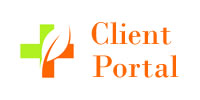What is Neurofeedback?
What is Neurofeedback?
 While neurofeedback is a remarkable treatment with myriad applications, it is not a panacea or magic solution. Though very easy to engage in during the sessions, it does require outside effort on the part of the client. Much like physical or speech therapies, work needs to be done at home to complement efforts in session. More progress can be made by clients who carry over efforts to their daily lives than those who do not.
While neurofeedback is a remarkable treatment with myriad applications, it is not a panacea or magic solution. Though very easy to engage in during the sessions, it does require outside effort on the part of the client. Much like physical or speech therapies, work needs to be done at home to complement efforts in session. More progress can be made by clients who carry over efforts to their daily lives than those who do not.
Neurofeedback, simply put, trains the brain to communicate more effectively within itself. ‘Neuro’ refers to the brain, ‘feedback’ refers to the action of showing the brain what it is doing–we are feeding the information back into the brain. The brain communicates through electrical activity, and sometimes the different regions of the brain do not communicate beneficially. This can be most easily understood by imagining the brain as if it were Earth, with the different regions of the brain thought of as continents. If Australia wanted to purchase something from France but did not have a currency exchange rate in place, the transaction would be difficult and frustrating. Extend that idea to different frequencies in the regions of the brain; without an ‘exchange rate’ the communication within the regions of your brain can be inefficient and frustrating, resulting in unwanted symptoms and patterns of behavior.
How do you teach the brain an exchange rate?
Noninvasively! Electrodes are placed on the scalp, reading the electrical frequency of the brain underneath*. We then show the brain its own activity by displaying a movie, playing a video game, or interacting with assorted virtual environments on a screen. When the brain is communicating beneficially the visuals on the screen are brighter, the characters move quicker in gaming and the sound is clearer; conversely, when the brain is drifting away from beneficial communication the screen darkens and shrinks, the game characters slow and static gets louder. Our brains greatly enjoy making things happen, and the brain figures out very quickly that it is causing the changes on the screen. By giving the brain a visual reward for beneficial activity the brain engages in neuroplasticity, strengthening the beneficial pattern of communication and weakening the maladaptive patterns.
We first teach the brain that it can choose what frequency it is using. Much like learning to throw a ball, we first aim at a large simple target and gradually train the brain to ‘hit’ smaller and more precise frequencies. Once the brain has learned to deliberately use the range of frequencies, we then train different regions of the brain to communicate more effectively. Different regions of the brain are known to be associated with specific symptoms and patterns of behavior. At intake you will fill out a thorough history and complete a symptom profile. Your technician will evaluate your symptom profile and plan your training accordingly. Training is highly individualized and is a collaborative effort between client and provider.
*Note that this does not let us see or hear what you are thinking or feeling; it merely tells us what frequency that part of the brain is using.
Who performs neurofeedback? How is it used in our clinic?
Othmer trained technicians perform neurofeedback sessions, working as a team with the counselor to ensure the safety and progress of our clients. Often, neurofeedback is used to facilitate your counseling and psychotherapy progress. A primary reason for this is because the treatment stabilizes the mind and the body, widening the ‘window of tolerance’, and enhancing and promoting physiological calming. We have found that clients can more easily progress in their counseling after receiving neurofeedback treatment; especially when being treated for PTSD.
Who can benefit from Neurofeedback?
One of the remarkable aspects of neurofeedback is that nearly anyone can sit for sessions. If you can look at a screen, listen to headphones, or feel the tactile toy buzzing, you can undergo the treatment.
Neurofeedback can be used on children as young as 6 months old. We can use the feedback to train a toddler’s brain to reduce seizure activity. The hardest part of training toddlers is keeping them from pulling off the electrodes; their brains are fully capable of engaging in the training! There is no upper age limit; elderly stroke survivors can train to regain sensation or mobility in damaged limbs, as well as improvements in speech and memory. Neurofeedback is also safe during pregnancy; training can be used for relief from the nausea, constipation, and migraine that often accompany pregnancy.
Chronic insomniacs can train for healthy sleep onset, sleep stage regulation (staying asleep), and transition to wakefulness. Migraine sufferers can train to reduce both the frequency and the intensity of migraines. Trauma survivors (soldier and civilian alike) can train their nervous systems to dramatically reduce PTSD symptoms such as startle responses, flashbacks, and distress. Individuals with ADHD can train to engage and disengage attention functionally, increasing the ability to shift attention needs at will.
An interesting aspect of neurofeedback is that is not just used for symptom alleviation, but also for optimization of an individual’s performance. Athletes, doctors, lawyers, academics, etc., have used neurofeedback to improve organization, physical coordination, reading and mathematics speed, and information recognition, retention, and recall.
Research regarding the Othmer method of neurofeedback and specific conditions
What are the downsides?
As with most things, neurofeedback is not entirely without risk. Those with a history of bipolar disorders, schizophrenia or other manic conditions are at most risk of negative reactions. This is well known and compensated for by your technician, provided you inform them of a personal or familial history of such conditions. There is a risk of setting off a manic episode; you are responsible for reaching out to ACE, Inc staff or your personal doctor if your symptoms elevate or worsen after a session. If notified, we can often ‘train out’ whatever troubling symptom has emerged.
Headaches/migraine, fatigue, vertigo, and nausea are the negative side effects we see most often in the general public. These side effects are easily adjusted for; this is why communication between client and technician is so vital. We cannot accommodate a symptom we are not told about. You will be set up with a symptom tracker which allows you to remotely update your technician regarding your symptoms.
Additionally, neurofeedback has known effects on medications and substances, both those that are prescribed and those used for recreational purposes. Anxiety and blood pressure medication, alcohol, tobacco, cannabis, and other recreational and prescription drugs may have a stronger impact than they typically do for you. This can be dangerous, and it is your responsibility to monitor your usage and reactions. It is important to discuss your medication, and any changes, with your personal doctor. Your technician cannot advise you on medications.
Unfortunately, insurance companies are not yet covering neurofeedback, though this is slowly changing. The notable exception is that the Alaska VA does support and pay for the treatment for veterans, with preauthorization. Typically, however, treatment needs to be paid for by the client.

Alaska Counseling Excellence, Inc.
2801 E Palmer-Wasilla Highway, Suite A
Wasilla, Alaska 99654
Phone: 907-373-5331
Fax: 907-373-5334

